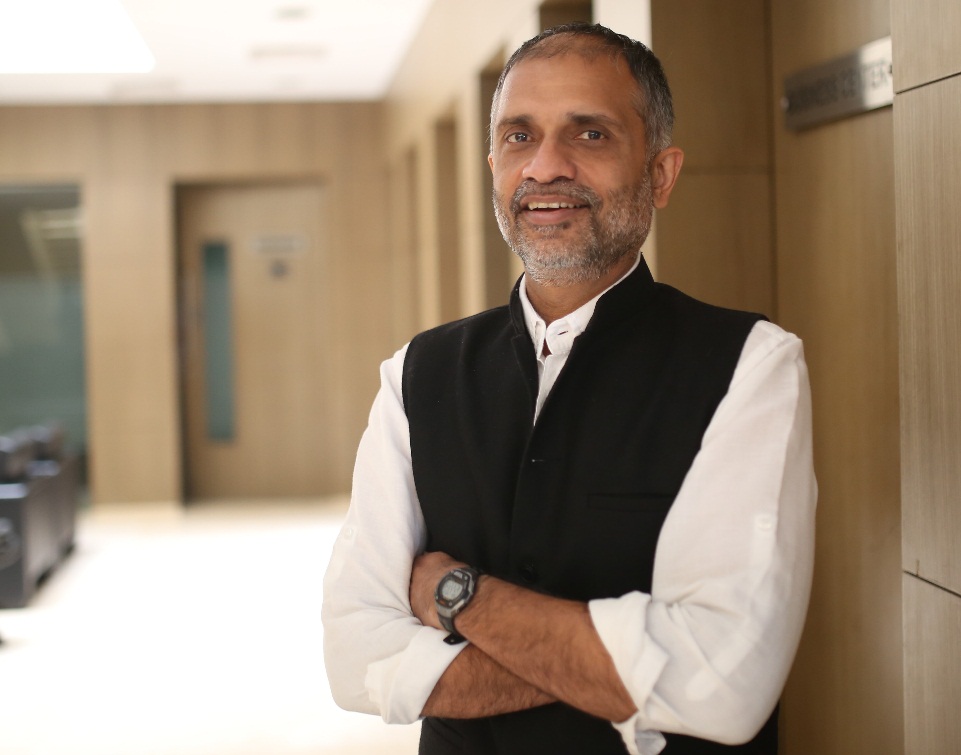The vibrancy of a democracy, and the health of a society, is significantly influenced by civil society. It comprises an entire spectrum from community-based collectives and voluntary organisations to NGOs and nonprofits of other sorts. Philanthropy plays a critical role in supporting that space, building it, keeping it alive, and growing it.
What is the role of civil society?
What is civil society’s specific contribution? One part of it is keeping the market and state honest. It is a counterbalance to the market and the state, and it must act as one. Civil society is the champion of the social and public good. On the other side, civil society also tries to work with the market and the state to make them more effective and useful to society. Both functions co-exist—not as a dichotomy but as a spectrum.
Philanthropy can play a specific role in this spectrum, by taking the kinds of risks that the state system finds hard to take because of operational reasons, and by helping develop civil society institutions.
Philanthropy can play a specific role in this spectrum, by taking the kinds of risks that the state system finds hard to take.
For instance, the state is likely to find it difficult to recruit good, highly-capable people at the beginning of an initiative, or when something is at an experimental stage, because of the its large systems, which have their internal logic. To help solve for this, the state can collaborate with civil society. If you look at many sectors—health, education, environment—we’ve seen that very often civil society leads in motivating people to take risks and/or championing the public good. Once proven, accepted or established, that gets taken up by the government in some sense or the other.
This is because civil society by its very nature is focused on the public good (or should be). It can be more flexible and can engage people in a way that the state cannot. It’s not a lacuna on part of the government system; it’s just the way the system is structured.
To keep the state and market balanced, civil society should—and it doesn’t do enough of it right now—build institutions. This has to be supported by philanthropy. India doesn’t have enough civil society driven institutions, but if it did, they would play a very important role in balancing the market and the state.
Philanthropy in India isn’t playing an adequate enough role
There is certainly some philanthropy happening in India, we know that; people are giving money–some are giving a lot, and some are giving smaller amounts, but it’s still a significant percentage of their wealth. And all this is good. But it is clearly not at the scale that the country needs, or comparable to that in some other countries or what the wealthy of India could be giving.
Consider an example from the USA: If you look at the strength of the American higher education system, not just as a teaching powerhouse but also as a place of intellectual ferment and knowledge creation, that keeps society on a certain path, it has been significantly funded by philanthropy.
We don’t have anything like that in India. One can count on one’s fingertips the significant universities or research institutions that have been funded by Indian philanthropy.
One big reason is that they just don’t want to do it. It’s not merely a question of needing large amounts of money to support higher education; it certainly can be done with smaller amounts of money, in interesting ways like setting up a research chair at a university or funding a research program. But all this presumes that someone actually and genuinely wants to give for such matters. Those who do, find ways of doing it.
Funding institutions takes more patience, understanding and perspective.
Today, when people do give, they prefer to give money for tangible things like scholarships, grants for buildings, donations to hospitals, because they believe that they can see the direct benefit. It seems simple and clear. Funding institutions, on the other hand, takes more patience, understanding, and perspective. And not many philanthropists seem interested in going down that path.
India hasn’t always been like this. We’ve had remarkable philanthropists in the first several decades of the 20th century—the Tatas, Birlas, Sarabhais, people like Jamnalal Bajaj, and other lesser known names—who built institutions, and helped build the nation with their social capital and a version of Gandhian trusteeship.
When you compare what they did to what today’s wealthy are doing—from the perspective of the wealth that they have generated in the past 20-30 years—are they giving enough? And are they supporting development of institutions? If you take corporate social responsibility (CSR) out of the equation—because CSR is not philanthropy—the answer is probably no.

Philanthropists who are genuine givers are not able to explain clearly why they don’t fund ‘activist-y’ work | Photo courtesy: Pexels
Business money is likely to be risk-averse
Business money of any sort—including money that has created wealth for individuals—is likely to be risk-averse. This is sensible, and the wealth owners cannot be faulted for this.
To put it simply, business money will find it hard to fund ‘activist-y’ things. This is because activist-driven work by its very nature destabilises the socio-political status-quo. And business money will not want to do that. That is just the nature of the beast. There were perhaps unusual times, as during the Indian independence movement, when this general principle did not hold true—but those were exceptions.
One of the most powerful routes to complement markets and state in any society is through building institutions.
Since business money will not fund activist-driven work, the alternative is for institutions to do this. When you help create an institution and you let go—because you have to let go—it becomes an important player in civil society, and over time, not in one generation but in the next generation and for generations to come, it truly becomes an independent voice and force that can question, or contribute to upending the status-quo.
Therefore, one of the most powerful routes to complement markets and state in any society is through building institutions.
The Tatas are a good example of this. Early on, they built many institutions. Today, Tata Institute of Fundamental Research (TIFR), Tata Institute of Social Sciences (TISS), Indian Institute of Science (IISc), and other smaller institutions are not bound by the commitments that any individual, or organisation that has business money, would otherwise be. They will do whatever it takes to fund innovation, cutting edge research, and so on. This is our own live history that clearly demonstrates what institution building can help achieve versus the ‘project funding’ approaches that are currently generally supported by philanthropists.
It’s illogical and unfair to expect philanthropists to fund any sharp forms of activism.
It’s illogical and unfair to expect philanthropists to fund any sharp forms of activism. Why would they fund anything that destabilises their existing business and its social fabric? The question they need to ponder over is why aren’t they funding and building institutions. It will not happen in their generation, but there will come a time in 20-30 years when such institutions will be separated from any business interests and will become very important players in civil society. And that’s what philanthropists today aren’t doing enough.
Today, the philanthropists who are genuine givers—and there are many of them—are not able to explain clearly why they don’t fund ‘activist-y’ work. They get defensive. But the rationale is clear. They should do what is right for them, and for the source of the money (their business), which is what allows them to be philanthropic. Nonetheless they should also fund institutions that outlive them and support the range of roles that civil society must play.
This article has been written based on an interview conducted by IDR with Anurag Behar.





